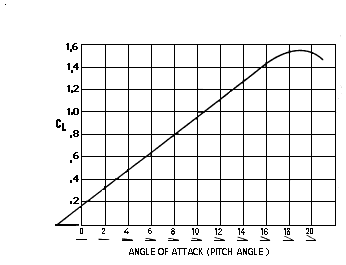High load, 50 degrees AOA (Angle of Attack), accelerated stall.

I have to say that Lüderitz-Speed challenge organizers put last year’s (2017) event in much better light. Channel is wider, safer and media coverage was much better. I choose Lüderitz for this blog because this is where sailing is done with super high loads under critical angle of attack. By the way, Mariam Rasmussen (on the picture above) posted on Facebook that coming down through the channel was surprisingly easy. This is how it feels when all aspects of extreme are put just right. I encourage everyone to come and experience Lüderitz while it lasts. It is not as scary as it looks, but experience is priceless. In my chat with Raffaello Gardelli, one of the Lüderitz organizers, he told me that channel is constructed at 130-135 degrees downwind. Wow! So I did my CFD setup close to Lüderitz condition. Let say 128 degrees downwind with wind speed 40kt and board speed 40kt. It gives us relative wind of 35kt and apparent wind angle of 64 degrees. In real life situation all this values are subject to rapid change. Since we are going to explore different AOA, values of air pressure and velocity magnitude will change regardless, so let's keep at least one value constant, apparent wind seed of 35Kt. Let’s take two, absolutely the same thick profile sails, but remove lover surface from one (so it becomes thin profile) and compare CFD study. In this case we have two sails with the same area and same camber.
Picture below is thin profile at the angle of attack 50 degrees. While inner surface generates pretty good pressure, 102524Pa, most of the outer surface is completely stalled, excluding small part of leading edge that generates pretty good amount of low pressure, 99659Pa, and great air velocity magnitude 46m/s.

(thin profile)

(thick profile)
Picture above (lower) is thick profile. I placed pictures close together just to make it easy to compare. Air flow on the thick profile outside is almost identical to air flow on thin profile as expected, but inner surface (on the left) has different high pressure distribution with very little difference in value.
Let’s take a closer look at what it means and what it does in real sailing scenario.
Diagram below shows apparent wind of 35kt at 64 degrees, were sail’s angle of attack is 50, with relative angle to the board of 14 degrees.

While upper surface is stalled, part of leading edge still creates lift with its small area and vector of lift (no difference between two designs). With rapid AOA increase, due to sudden gust or accidental oversheeting, outer surface will stall and remaining lifting surface will pull forward. Lower surface on thin sail, because of its curvature, always has shifting area of high pressure contributing to lift. Looking at high pressure distribution on CFD picture, high pressure area is right in the front, behind the mast. It will interact with lower surface as 90 degrees vector of lift, the same thing on thick profile, except vector of lift remains stationary. Two vectors of lift on thin sail are rapidly moving forward and if not anticipated, will become an early stage of "catapult".
Because vector of lift from lower surface on thin sail is dynamic and on thick sail is stationary, it makes wing more stable even in stalled condition.
In My next blog we will take a look at 40 degrees AOA, when thin, traditional, profile is at its best.
Thank you for reading.



















